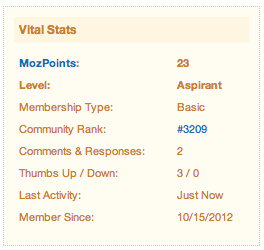For marketers who recognize the importance of content marketing, scaling production without sacrificing quality is now a common goal heading into 2013. If the volume of content coming out of your Marketing Department isn’t quite hitting the mark, there may be a goldmine of content waiting to be produced by non-marketers within your business or organization. If you’ve ever struggled with encouraging high-quality, internally-produced content, here are five steps to get your internal subject-matter experts blogging while having fun doing it.
1. Goals
Before even thinking about approaching anyone in the company about creating content, make sure the Marketing Department is clear on the goals of that content. Are you writing a blog post to answer a customer or client question, or solve a problem that prospects are experiencing? Is lead generation a goal? Or are you simply trying to improve your brand reputation? Without well-defined goals, your content marketing efforts will most assuredly flop.
 2. Training
2. Training
It’s likely that your non-marketing colleagues are not well-versed in the art of blog writing. Investing the time to train them on best practices for titles, structure, calls-to-action, style and content governance will pay dividends in the form of quality content that will require only minor revisions to start.
Educate your writers on the power of repurposing content in order to alleviate the stress of starting from scratch with every new blog post. Consider also a training session on social media etiquette, which will protect you against any unfortunate gaffes when it comes time to promote content through Twitter, Facebook, LinkedIn or Google+.
3. Support
Since internal employees are going to invest so much time in creating content for the Marketing Department, you will have to do some things for them in return to ensure that content is successful.
Before any content is published, make sure it is edited for grammar, spelling, punctuation and style, as well as rigorously fact-checked. Ensure that your blog is fully optimized for social sharing and includes an author bio with links to the author’s social media profiles. Setting up Google Authorship is a must in order to begin building your employees’ AuthorRank. Tying content to their personal brands will encourage employees to continually contribute and give them a vested interest in its success.
4. Rewards
Offering incentives in exchange for blog posts can be a good cultural fit for some organizations. For others, it can create problems. If rewards programs like pay-for-performance are already in place, tangible incentives like cash, gift cards and other prizes can go a long way in encouraging content production.
Regardless of what you decide, some of the best rewards are intrinsic: based on recognition and achievement. Things like AuthorRank, increased personal brand recognition and friendly competition internally may prove to be more powerful and less of a lightning rod than tangible rewards.
5. Feedback
Providing feedback on metrics such as traffic, conversions and social shares can encourage employees that their efforts are producing real results for the company, as well as foster competition among top performers. Consider providing monthly reports or displaying a “leader board” near a gathering area.
SEOmoz goes one step further by adding gamification elements. Their thumbs up/thumbs down buttons provide instant feedback to authors, as well as “MozPoints,” levels and ranks.
Remember: your internal subject-matter experts should represent low-hanging fruit for content production. There’s likely no better source for authoritative and trustworthy content around your brand, products and services.
I was a recent guest on the Max Impact Hangouts series where I discussed this strategy with host Max Minzer:
For more content creation tips, check out our free guide: The 5 Ws of Content Creation.
